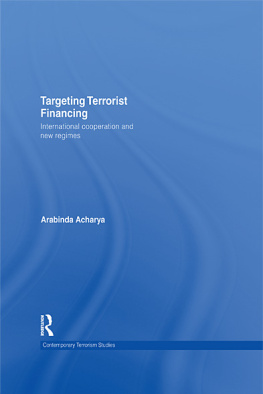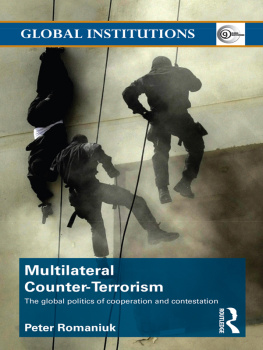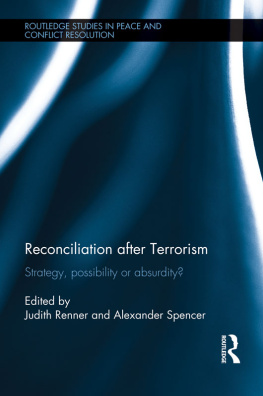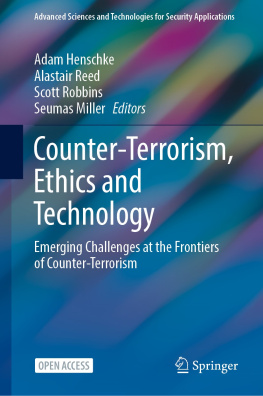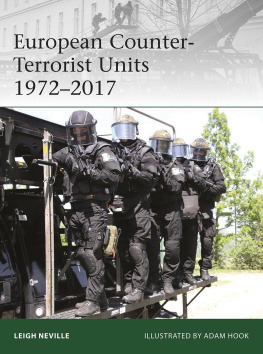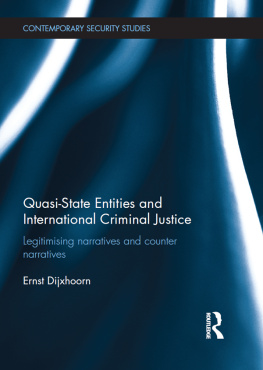Developments in Counter-Terrorist Measures and Uses of Technology
This book considers some of the most notable aspects of the legal response to the war on terror post- 9/11 and the use of technology to support them. It examines the shift from a criminal justice response to the creation of a parallel preventive system running in tandem with it. This system has tended to veer away from the commission of criminal offences or adherence to ordinary criminal justice safeguards. Such a preventive strategy relies on targeting terrorist suspects those who it is thought may in future commit terrorist acts and curbing their actions with the aim of preventing terrorist activity before it occurs.
The book further considers the role that surveillance plays in the counter-terrorist efforts of state or non-state actors. It also evaluates the counter-productive effects that many of these measures have had.
This book was originally published as a special issue of International Review of Law Computers & Technology.
Helen Fenwick is Joint Director of the University of Durham Human Rights Centre. She is author of Civil Rights: New Labour, Freedom and the Human Rights Act (Longmans/Pearson, 2000); Media Freedom under the Human Rights Act (2006: OUP, with G. Phillipson); Text, Cases and Materials on Public Law and Human Rights (3rd ed Routledge: 2010, with G. Phillipson) and Civil Liberties and Human Rights (4th ed 2007, Routledge).
First published 2012
by Routledge
2 Park Square, Milton Park, Abingdon, Oxon, OX14 4RN
Simultaneously published in the USA and Canada
by Routledge
711 Third Avenue, New York, NY 10017
Routledge is an imprint of the Taylor & Francis Group, an informa business
2012 Taylor & Francis
This book is a reproduction of the International Review of Law, Computers & Technology, vol. 25, issue 3. The Publisher requests to those authors who may be citing this book to state, also, the bibliographical details of the special issue on which the book was based.
All rights reserved. No part of this book may be reprinted or reproduced or utilised in any form or by any electronic, mechanical, or other means, now known or hereafter invented, including photocopying and recording, or in any information storage or retrieval system, without permission in writing from the publishers.
Trademark notice: Product or corporate names may be trademarks or registered trademarks, and are used only for identification and explanation without intent to infringe.
British Library Cataloguing in Publication Data
A catalogue record for this book is available from the British Library
ISBN13: 978-0-415-50566-6
Typeset in Times New Roman
by Taylor & Francis Books
Publishers Note
The publisher would like to make readers aware that the chapters in this book may be referred to as articles as they are identical to the articles published in the special issue. The publisher accepts responsibility for any inconsistencies that may have arisen in the course of preparing this volume for print.
Contents
Helen Fenwick
Adam Tomkins, Helen Fenwick and Liora Lazarus
Helen Fenwick
Quirine A.M. Eijkman and Daan Weggemans
Tufyal Choudhury and Helen Fenwick
Daniel Fenwick
Barrie Sheldon
Introduction
9/11 re-shaped the counter-terrorist response in the UK. After 9/11, the war on terror was viewed, as not a matter of choice but a strategic imperative.1 Thus, the response has been heavily influenced post-2001 by the governments view of the threat posed by extremist Islamic groups and the fear of suicide-bombing. The UK Governments response to this threat has military aspects the wars in Iraq and Afghanistan but within the UK itself it is police-based: it has involved a very significant ratcheting up of the states coercive powers in terms of surveillance, data-sharing, detention, asset-freezing and other invasions of personal liberty.
Broadly speaking, four main counter-terrorist strategies can be identified: increased use of forms of surveillance, including use of CCTV and tracking of personal data; an increase in the grant of very broad powers to the police; the creation of a range of broad terrorism offences, including in particular early-intervention offences, targeting the preliminary and preparatory stages of suicide bomb attacks; use of preventive measures to curb the activities of individuals outside the criminal justice system. All these trends were apparent post 9/11. The first three were already apparent post-2000, but the use of the measures in question intensified post 9/11. The last trend stemmed directly from 9/11.
But a shift of emphasis is underway in 2011. When the Coalition government came to power in 2010 it conducted a review (Review of Counter-Terror Law and Security;2 hereinafter The Review) in January 2011 of the more controversial and human-rights infringing aspects of counter-terror laws and practices. It began to put certain reforms in place in 2011. How far-reaching those reforms are likely to be in practice and their compatibility with the European Convention on Human Rights is considered in this Special Issue edited by Helen Fenwick.
Expansion of the range of terrorism offences
The previous Labour government introduced a new counter-terrorist scheme with the introduction of the Terrorism Act 2000 (TA). A change in policy was encapsulated in the Terrorism Act 2000 in that temporary, graduated measures were replaced with permanent, broadly applied ones, but the 2000 Act relied on a traditional reactive approach, that of seeking to charge terrorist suspects with offences and bring them to trial. This scheme offered quite a strong contrast to the previous one of the 1970s, 1980s and 1990s. The previous UK counter-terrorist scheme under the Prevention of Terrorism (Temporary Provisions) Act 1989 and the Northern Ireland (Emergency Provisions) Act 1996, as amended revealed some acceptance of the principle that emergency measures should be adopted only in the face of immediate and severe need. The TA was introduced at a time when terrorist attacks were not of the scale that they had been previously, although the government clearly had in mind an impending threat from extremist Islamic groups. The TA applied all the special terrorism offences to a far wider range of groups than had previously been the case; it was therefore a much less graduated measure than the previous ones.
The anti-terrorism powers and offences discussed in this issue all use the basic definition of terrorism set out in section 1(1) of the Terrorism Act 2000. This provides that terrorism means the use or threat, for the purpose of advancing a political, religious or ideological cause, of action designed to influence a government or to intimidate the public or a section of the public, which involves serious violence against any person or serious damage to property, endangers the life of any person, or creates a serious risk to the health or safety of the public or a section of the public, or is designed seriously to interfere with or seriously to disrupt an electronic system. This extraordinarily wide definition covers such action occurring anywhere in the world (under s 1(4)). Moreover, because it covers damage to property, it could clearly encompass direct action by protest groups, such as causing criminal damage to GM crops or airforce bases used for military attacks on other countries.


